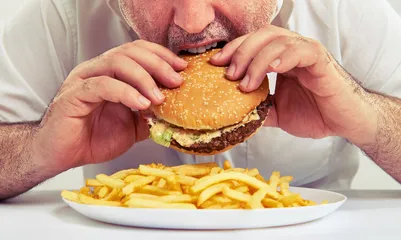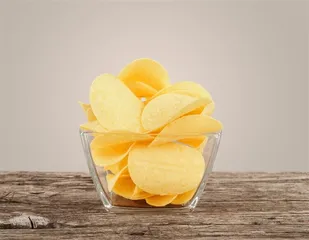What cannot be eaten during weight loss?
Losing weight has always been a concern of people. Many people are looking for various ways to lose weight in order to pursue beauty. But we should lose weight scientifically and healthily. We should not go on dieting just to lose weight, or even believe in so-called drugs on the Internet to lose weight, let alone rush for success. The correct way to lose weight should be appropriate, scientific exercise and appropriate food. Food should be low in calories, low in fat, low in sugar, and nutritious food containing protein and vitamins.
So when ingesting food, what foods cannot be eaten when losing weight?
1. Fritters are fried in oil during the making process and contain a lot of oil. These overly greasy foods are very difficult to digest and are high-calorie foods. If you want to lose weight, you should pay attention. Fritters are absolutely not allowed to eat.
2. Hamburger

Hamburgers are also not edible. Hamburgers are very high in calories and have little nutritional value. Hamburgers contain bread, which is also a high-calorie carbohydrate food. There is also meat in hamburgers. These are high-calorie foods and will get fat if you eat them.
3. Most of the cream in the cream chocolate cake cake is margarine, which contains saturated fatty acids, which can easily lead to fat increase. Moreover, the calories of chocolate are very high. These foods are not only unnutritious, but also lead to obesity. You should eat more foods containing dietary fiber.
4. Hot pot hot pot can be seen at a glance that it is very high in calories, especially spicy ones, and contains a lot of oil and high in fat. Moreover, most of the meat cooked in the hot pot is meat, and the fat content of the meat is also high. Eating too much spicy food can also cause gastrointestinal discomfort and stimulate the stomach. So eat less.
5. It's not that you can't eat pork during pork weight loss, but I suggest eating less pork because pork is too high in fat. You can replace it with chicken or beef. The fat content of chicken is a little lower than pork.
6. Most of the cakes of instant noodles are fried, high in calories, and do not contain nutritional value, so it is best not to eat them.
7. Cola, alcohol and other drinks Cola is a carbonated drink. The main ingredients are syrup and carbon dioxide gas and has no nutrients to the body. It can also lead to obesity, dental caries, osteoporosis, etc. So whether you are losing weight or not, you should not drink too much. The alcohol contained in alcohol reduces the burning of body fat.
8. Roast sausage is also roasted with oil, has high fat content and very high calories. 100g of roasted sausage is 307 calories, which means it takes an hour of jogging. Imagine how high the heat is!
9. Potato chips

Potato chips, like hamburgers, are high-calorie food and puffed food. They have no nutritional value. Try to eat as little as possible if you want to lose weight.
10. Dried fruits In fact, it is incorrect for some people to eat only fruit and not eat during weight loss. Because some fruits not only cannot lose weight, but also gain weight. Fruits themselves contain sugar, and dried fruits are pickled foods and are also very high in calories.
11. Ice cream

As we all know, most ice cream is high in calories and contains cream. Especially girls should eat less because too cold is not good for the body.
12. Cookies Many girls like to eat biscuits and other snacks while watching movies, but they don't know that you are getting fatter and fatter. Biscuits are also high in calories and contain fat, so try to eat less.
To lose weight is to keep your mouth shut and your legs open. Efforts will definitely be fruitful!